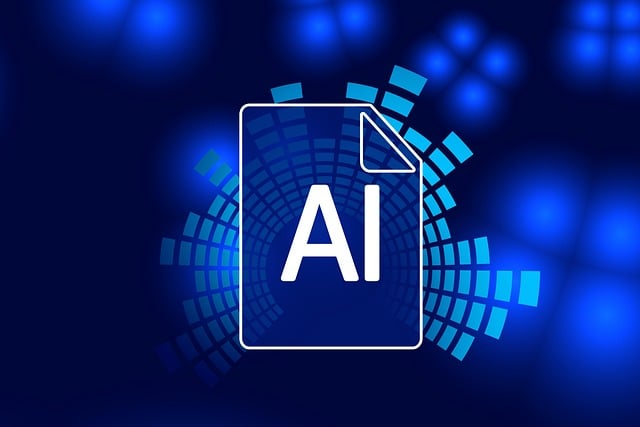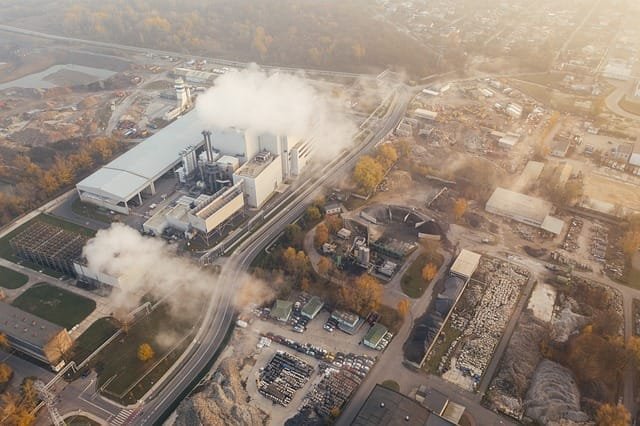10 Key Differences Between Artificial Intelligence and Machine Learning: A Clear Guide for 2025
Artificial intelligence and machine learning are revolutionizing the way we interact with technology by enabling systems to simulate human intelligence and learn from data. Artificial intelligence (AI) is a broad field focused on creating intelligent machines capable of reasoning, problem-solving, and decision-making, while machine learning (ML), a subset of AI, specifically deals with systems that improve their performance as they are exposed to more data. These transformative technologies power everything from virtual assistants and personalized recommendations to predictive analytics and autonomous vehicles, driving innovation across industries and reshaping our digital landscape.
What Is Artificial Intelligence (AI)?
Contrary to popular belief, artificial intelligence (AI) is not about creating robots that think and act like humans. While Hollywood often portrays AI as humanoid robots, the reality is far more practical and less sensational. AI refers to a broad field of computer science focused on building systems capable of performing tasks that typically require human intelligence.
For instance, using a virtual assistant like Siri or Alexa is AI at work. These systems process your voice commands, understand your requests, and provide accurate responses – all without human intervention. AI encompasses various technologies such as natural language processing (NLP), computer vision, and even robotics, aiming to mimic human reasoning, learning, and problem-solving capabilities.
How AI Works AI systems rely on algorithms and models to process large datasets. They make decisions or predictions by analyzing patterns, often without explicitly being programmed for every scenario. For example, an AI-powered fraud detection system learns to identify suspicious transactions by analyzing patterns in historical data.
Real-Life Examples of Artificial Intelligence
AI applications are everywhere, even if we don’t always recognize them. Here are some everyday examples:
- Virtual Assistants: Tools like Google Assistant and Cortana help us manage our schedules, play music, or answer questions.
- Smart Home Devices: AI powers smart thermostats, security systems, and home assistants to optimize energy use and security.
- Healthcare: AI systems analyze medical imaging or predict patient outcomes based on historical data.
From personalized shopping recommendations to autonomous cars, artificial intelligence has reshaped how we interact with technology. Its applications are diverse, making it an integral part of modern life.
What Is Machine Learning (ML)?
A common misconception is that machine learning (ML) and artificial intelligence are the same. However, machine learning is a subset of AI, and it specifically focuses on systems that can learn and improve from experience without explicit programming.
Think of ML as the “engine” behind many AI applications. It’s what allows Netflix to recommend movies or email platforms to filter out spam. Unlike traditional programming, where a developer provides explicit instructions for every possible scenario, ML algorithms improve as they process more data.
How Machine Learning Works Machine learning relies on training models using vast datasets. During training, the model identifies patterns and relationships in the data. Once trained, it can make predictions or decisions based on new, unseen data. For example, an ML model trained to identify spam emails will analyze elements like subject lines, sender addresses, and content to classify emails as spam or not.
Real-Life Examples of Machine Learning
Machine learning is the backbone of many technologies we use daily. Here are a few examples:
- Recommendation Systems: Platforms like Amazon and Spotify use ML to suggest products or playlists tailored to your preferences.
- Image Recognition: ML helps social media platforms tag friends in photos or analyze images for content moderation.
- Predictive Analytics: Businesses use ML to forecast sales trends, customer behavior, or inventory needs.
Machine learning’s ability to adapt and evolve makes it a critical tool in industries ranging from finance to healthcare. By processing vast amounts of data efficiently, it enables smarter decision-making and better user experiences.
Key Differences Between Artificial Intelligence and Machine Learning
Despite their close relationship, artificial intelligence and machine learning have distinct differences that are important to understand. Let’s break them down:
1. Definition and Scope
Artificial intelligence is the overarching concept of machines designed to simulate human intelligence. It includes technologies like natural language processing, robotics, and expert systems. On the other hand, machine learning is a specific branch within AI that focuses on training systems to learn from data and improve over time.
Example: AI aims to replicate human reasoning, while ML specializes in recognizing patterns and making predictions.
2. Purpose and Goal
AI strives to create systems that can think, reason, and solve problems like humans. Its goal is to automate intelligent behavior. ML, however, is about creating systems that can automatically learn and improve from data, often solving narrowly defined problems.
Example: AI can power a self-driving car to navigate through traffic by reasoning like a human driver. ML, in this context, helps the car learn from vast amounts of driving data to improve its performance.
3. Functionality and Learning Process
AI systems can operate without direct learning if they are programmed to perform specific tasks. ML systems, by contrast, rely entirely on data to train and improve models.
Example: A rule-based AI chatbot follows pre-set rules, while an ML-powered chatbot learns to respond by analyzing conversations over time.
4. Real-world Applications
- AI Applications: Autonomous robots, virtual assistants, and expert systems for decision-making.
- ML Applications: Fraud detection, personalized recommendations, and predictive analytics.
Key Takeaway: While AI focuses on simulating human intelligence as a whole, ML emphasizes creating models that learn and adapt within specific domains.
5. Relationship Between AI and ML
Machine learning is a subset of AI, meaning all ML systems are AI, but not all AI systems use ML. AI is the broader concept, while ML is a tool that makes AI applications smarter and more adaptive.
Example: A chess-playing AI might use machine learning to improve its strategy, but the overall decision-making framework is AI.
Applications of Artificial Intelligence and Machine Learning
AI and ML have transformed how industries function by introducing innovative solutions and improving efficiency. While both technologies are often used interchangeably, their applications highlight unique capabilities:
1. AI Applications Across Industries
- Healthcare: AI analyzes complex medical data to assist in diagnosing diseases, predicting patient outcomes, and even performing robotic surgeries.
- Retail: From virtual shopping assistants to inventory management systems, AI helps retailers optimize operations and enhance customer experience.
- Transportation: Self-driving cars and AI-based traffic management systems reduce congestion and improve safety.
Example: A hospital using AI-powered imaging systems can identify early signs of diseases, saving countless lives through early intervention.
2. ML Applications Across Industries
- Finance: ML algorithms detect fraudulent transactions and provide personalized financial advice.
- Entertainment: Platforms like Netflix use ML to recommend content based on viewing habits.
- Marketing: Businesses use ML for customer segmentation, optimizing marketing campaigns, and improving conversion rates.
Example: An e-commerce site utilizing ML-driven recommendation engines can increase sales by suggesting products customers are likely to buy.
3. Complementary Roles of AI and ML
While AI focuses on broader problem-solving, ML’s strength lies in making data-driven predictions and decisions. Together, they enhance business processes and unlock new opportunities.
Key Insight: Organizations leveraging both AI and ML gain a competitive edge by automating repetitive tasks, improving decision-making, and offering innovative solutions.
Future Trends in Artificial Intelligence and Machine Learning
AI and ML are not just tools of the present; they are shaping the future. In this section, we’ll explore the key trends and advancements that are expected to drive the evolution of these technologies in the coming years.
1. Increased Focus on Explainable AI (XAI)
One of the challenges of AI is its “black box” nature—users often don’t understand how AI arrives at decisions. Explainable AI aims to make AI systems more transparent and accountable.
- Why It Matters: In industries like healthcare and finance, trust is critical. Explainable AI helps ensure decisions are ethical, accurate, and understandable.
- Example: A medical diagnosis AI might include detailed explanations about why it suggests a particular treatment plan.
2. Integration of AI in Edge Computing
Edge computing refers to processing data closer to its source rather than in centralized data centers. AI at the edge enables real-time decision-making with minimal latency.
- Applications: Self-driving cars, IoT devices, and smart cities will rely heavily on AI-powered edge computing.
- Key Benefit: Faster processing and reduced bandwidth usage, making systems more efficient.
3. Advances in Natural Language Processing (NLP)
NLP is becoming more sophisticated, enabling AI to understand and generate human-like language better.
- Trends: Improved machine translation, sentiment analysis, and conversational AI systems.
- Examples: Virtual assistants that understand context better or chatbots capable of holding more natural conversations.
4. Democratization of AI and ML
As tools and platforms become more user-friendly, AI and ML will no longer be limited to experts.
- Tools: Platforms like Google AutoML and Microsoft Azure AI make it easier for non-technical users to develop AI solutions.
- Impact: Small businesses and individual entrepreneurs can leverage AI to enhance their offerings.
5. Greater Emphasis on Ethical AI
As AI systems become more integrated into daily life, ensuring they operate ethically is crucial.
- Key Concerns: Data privacy, algorithmic bias, and the societal impact of automation.
- Solutions: Governments and organizations are developing guidelines and frameworks for responsible AI use.
6. AI and ML in Personalized Experiences
From healthcare to entertainment, personalization will become even more precise with AI and ML.
- Examples: Tailored treatment plans in healthcare or hyper-personalized streaming recommendations.
- Benefits: Improved user satisfaction and outcomes.
Conclusion
The future of artificial intelligence and machine learning holds immense potential. These technologies are poised to become even more integral to industries, driving innovation and creating smarter, more efficient systems. By staying informed about trends and advancements, businesses and individuals can position themselves at the forefront of this transformative era.








One Comment